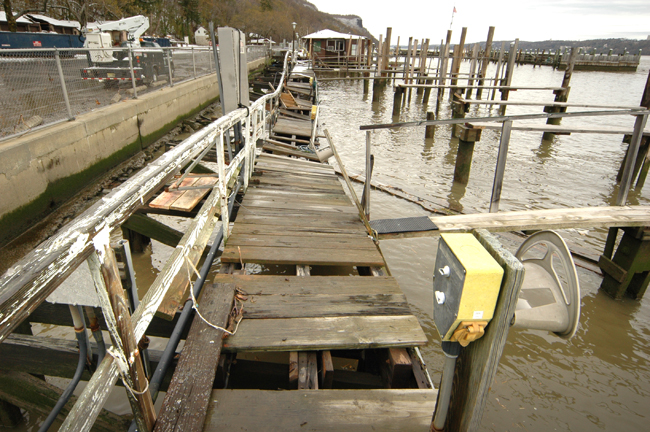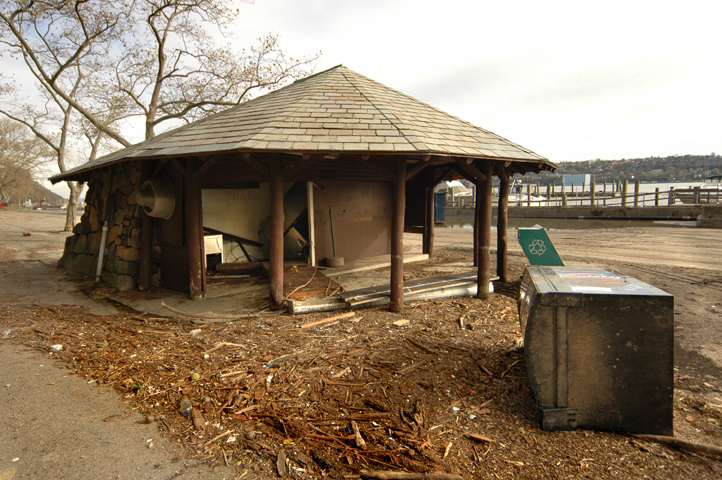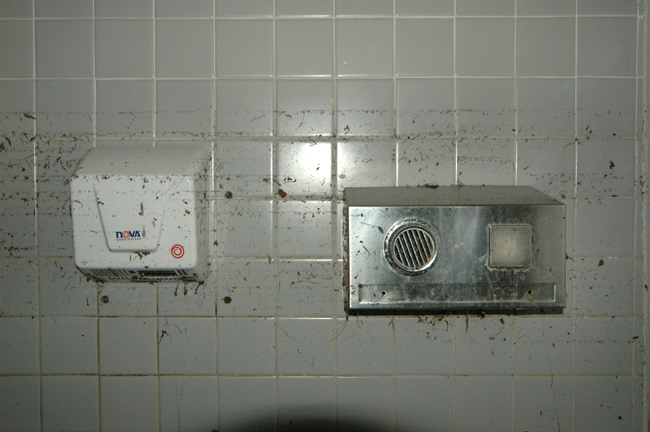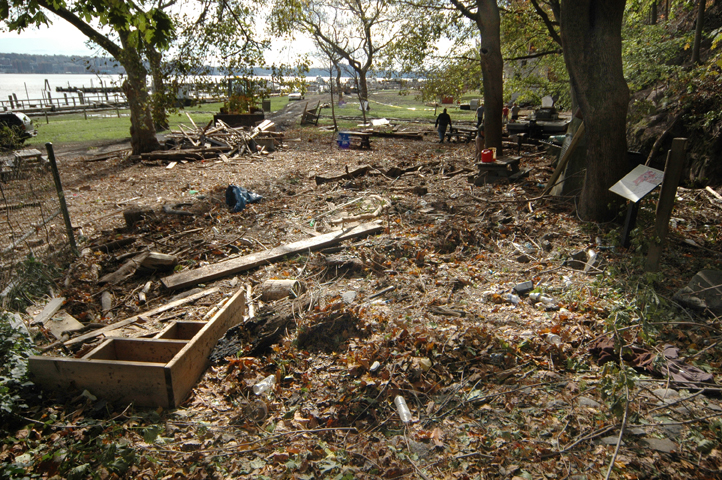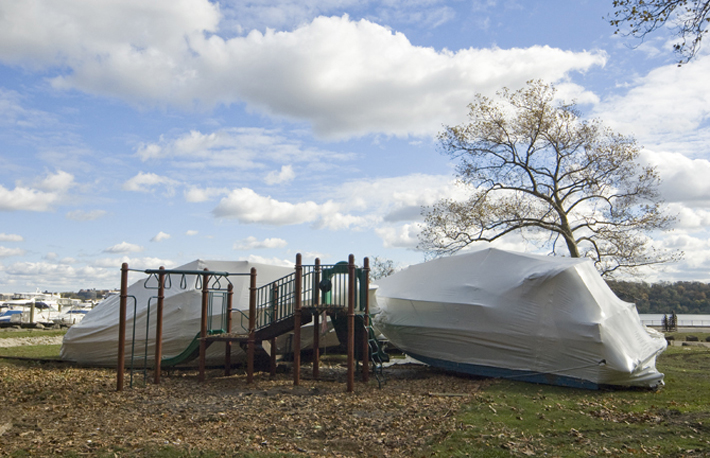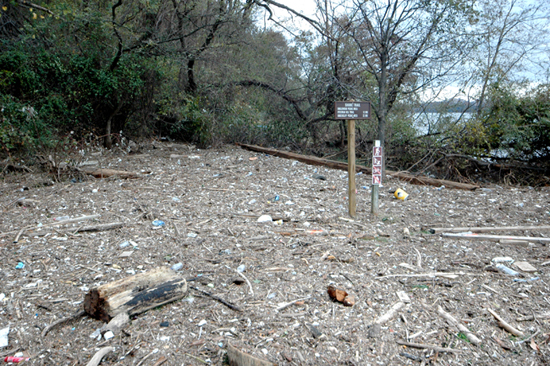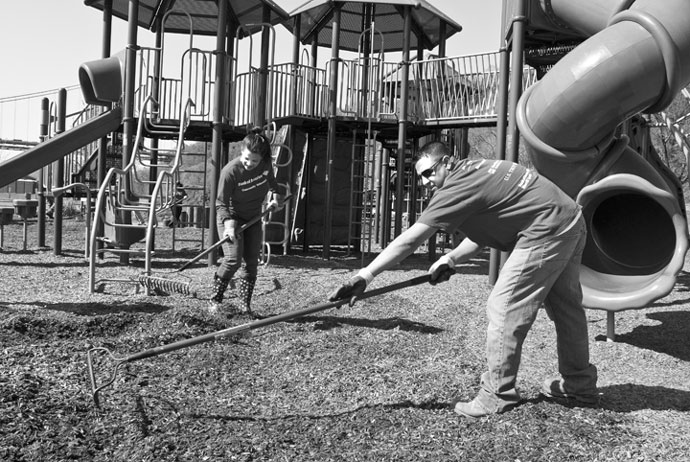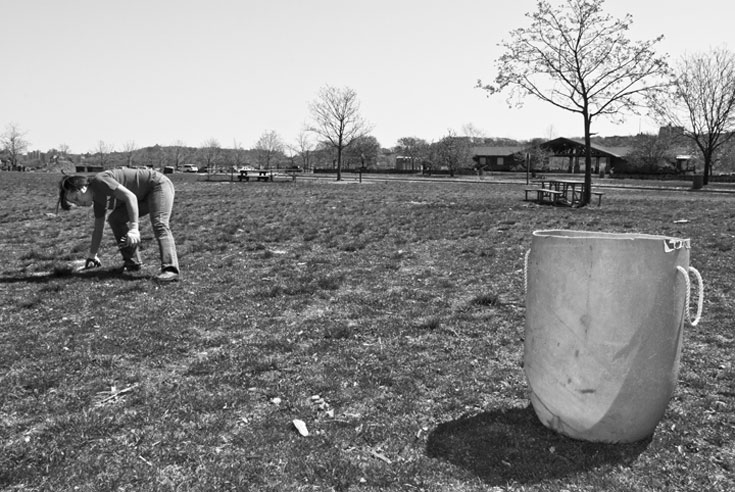Six Months After
A “Cliff Notes” Story
Month Year
At 9:24 on Monday evening, October 29 last year, the storm surge from Hurricane Sandy topped out at 13.88 feet at Battery Park in Manhattan, breaking the previous record, set in 1960, by almost four feet. The record surge continued up and up the Hudson Valley, overrunning the riverfront in town after town, county after county, including the twelve miles of riverfront contained in this park. Six months later, like so many others, we are still digging out, still repairing and rebuilding, still discovering just how bad it was — and just how much it matters to dig out, to repair and to rebuild.
Sandy aftermath photos by Anthony Taranto.
The most complex — and expensive — repairs continue to involve the park’s riverfront electrical systems. Transformers, electrical panels, and power stanchions went underwater, shorted out, and must be replaced. By code (and by common sense) even smaller electrical components that were submerged in salt water that night must also be replaced: every light switch, every outlet, every restroom hand dryer.
Power has been restored at Alpine Picnic Area and Boat Basin, and work is on track to get Ross Dock back on line soon. The damage at Englewood Picnic Area and Boat Basin was more extensive, and it may be some time before power can be restored there.
With the electrical systems down, the water and sanitary systems cannot function, and port-a-johns have been in place of restrooms at Englewood and Ross Dock this spring.
Our dock crew had to nearly fully reconstruct the boat house at Alpine Boat Basin, including extensive repairs to the support structure, walls, and interior finishes. A contractor meanwhile has been doing heavy repair to long sections of ruined docks at the basin, with our dock crew trailing him to rebuild walkways and catwalks. The basin is opening on schedule for May, but sections remain closed for ongoing construction.
The historic Kearney House was saved by the quick work of the dock crew, who erected temporary framing in the first hours and days after the tide had smashed it open. A contractor specializing in historic reconstruction and repair has been hired to rebuild the older, stone section. Sifting through the debris, we were able to piece together the two windows that had been in the two-and-a-half-century-old stone wall that collapsed, at least well enough that he will be able to fabricate replacements following the same design and dimensions. He will install them into the wall as he rebuilds it from the pile of rock now sitting on the ground beside the house. (We are fortunate that the house has been thoroughly documented by architects on several occasions since the Park Commission first bought it in 1907.) The “new,” circa 1840 northern addition, made of wood, will be restored later in the summer.

Week after week through this long winter, our maintenance department has been putting the park back into something like what visitors remember it being. Along with all else, collection and disposal of miles of debris washed in by the storm has been an unending task.

By the end of March, thirty-four dumpsters, filled with over a thousand cubic yards of branches and lumber, barrels and tires, Styrofoam floats and sections of docks — anything and everything that could be pushed by the storm waters — had been hauled from the park.
Volunteers have so far logged over two thousand hours assisting with the cleanup. The first Sunday of each month, even before Sandy hit, the Appalachian Mountain Club has sponsored a monthly “Meet-Up, Clean-Up” event with us, usually meeting at Ross Dock. These monthly events have taken on new meaning since Sandy. Plasma and MDI, two groups which use the park for their events, have added the hauling of debris from the shore to their regular activities in the park.
Companies like Unilever, AT&T, Bank of America, and Sage Collective have called to ask if they can help, and under the supervision of our operations department, their employees have gathered debris at the picnic areas along the river and helped spread new woodchips at the playground at Ross Dock so that children can use it again.
About forty members of AmeriCorps hiked down to Peanut Leap with the trail crew to gather debris ranging in size from bottle caps to park benches, which our maintenance crew was then able to pick up by boat and ferry to dumpsters at Alpine.
Seventeen volunteers from MEVO, the Mahwah Environmental Volunteer Organization, also helped clean the shoreline, as did about five hundred New Jersey students with Clean Communities, organized by the Bergen County Department of Health Services. Answering to a notice we placed about a week earlier, fourteen park visitors joined us to hike down to Forest View in Alpine to pile up debris to be transported out by ATV.


The trail crew has meanwhile spent about a thousand hours just cutting trees on trails, while also removing large debris from the southern end of the Shore Trail, and tending to immediate structural repairs such as bridge and stair replacement. Shortly before Sandy hit, the trail crew had secured a grant for $24,000 from the New Jersey Recreational Trails Program, to be used to repair stone stairs and seawalls along the Shore Trail; this grant now takes on a new immediacy.
The Park Commission estimates that damage from Sandy in the park will cost just over a million dollars to repair. We have seen a great outpouring of support from our visitors and volunteers. Given that, and the fact that the total regional cleanup costs from this storm will range into the many billions — that lives were lost, homes destroyed — it is hard not to count ourselves lucky.
– Eric Nelsen –



